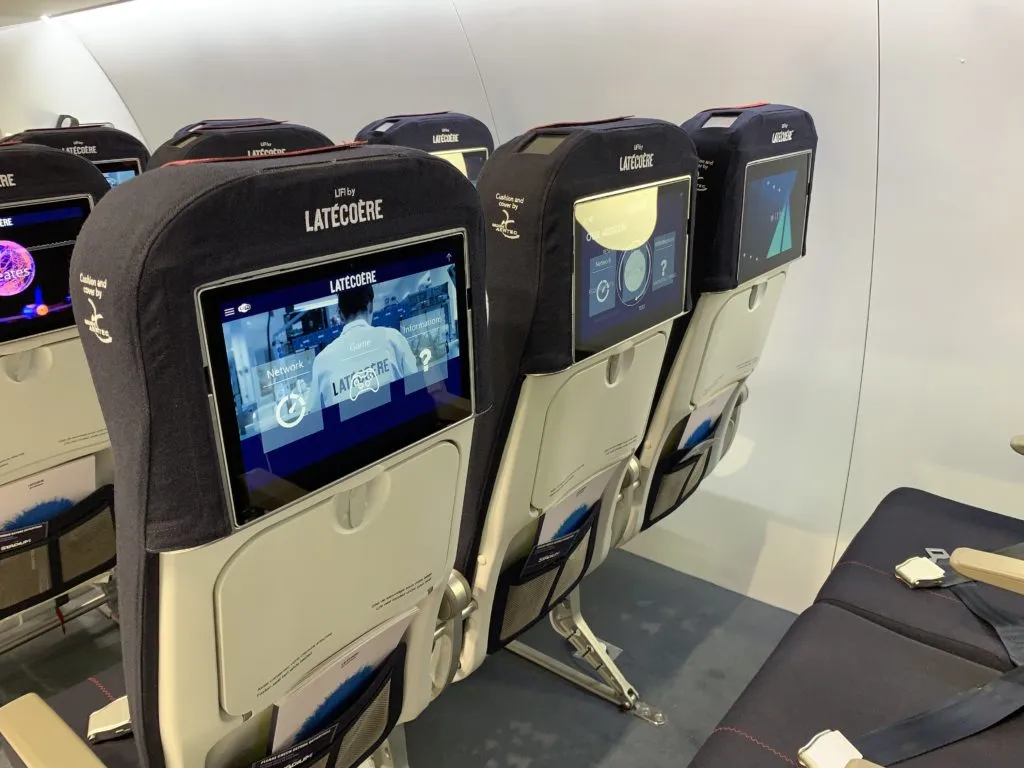Lifi, the use of light to wirelessly transmit data, is seeing a remarkable amount of momentum within the aviation and passenger experience world, with multiple major suppliers including Astronics and Latécoère continuing to work on how this technology might be used, whether inside the cabin, at the airport, or elsewhere.
One of the fundamental questions with the adoption of lifi and many new technologies is around whether it makes sense for the aviation industry to “roll its own” versions of the hardware — or whether to work with partners to commercialise existing hardware and knowledge gleaned from other industries, while serving as an integrator, certification specialist and commercial partner.
Latécoère is taking the latter approach. Speaking to Runway Girl Network, the company’s chief technology officer Serge Bérenger explains that “the Latécoère capability today is infrastructures, wiring, intraconnection systems and aerostructures. We want to scale up on this, and make sure we can provide the best technology to our customers when it comes to communication hardware.”
As a result, Latécoère is moving towards commercialisation with new hardware partnerships, with Signify (formerly Philips Lighting, and one of the leaders in the LED lighting components that lifi uses) and Huneed Technologies, a Korean military communications specialist.
“Signify is in charge of the modem, the conversion of electronics to control the LED, and the modulation of the light beam,” Bérenger explains, noting that this is just one of the modems used in the systems to convert digital electronic data to light and back again.
Signify launched its latest lifi systems for professional use — which it brands as Trulifi — earlier this year, citing commercial offices, hospitality, retail spaces, healthcare operations and industrial uses as its key target markets.
Huneed, meanwhile, “is the leader in military communication systems and modem communication systems in Korea. They have a superior knowledge in communication networks, covering the servers, the switches, the routers, and the communication points from satellites to the ground,” Bérenger notes.
On Latécoère’s part, the work will be around integration and the experience of being a tier 1 commercial aerospace supplier. The French company will be in charge of the commercialisation of the lifi product into the cabin and into airlines.
Specifically, “we integrate these modems into our systems: the electronics box, the dongles that will be integrated into the seat, and the interface with the fibre optics in the aircraft and the rest of the systems in the aircraft,” Bérenger says.
The partners hope to finalise their industrialisation within the next year, and have a third quarter 2020 deadline to have completed the integration of technology from both Signify and Huneed into the systems Latécoère has been designing. Shortly afterwards, the product will be able to be deployed onto an aircraft, starting in the fourth quarter of 2020.
The response from the industry to the concepts demonstrated at the Aircraft Interiors Expo in Hamburg and at the Paris Air Show at Le Bourget has been remarkably positive, Bérenger says.
“There is a strong appetite from all the airlines, but not only the airlines: also the aircraft manufacturers, a strong appetite from the cabin integrators and the inflight entertainment manufacturers, because this kind of infrastructure reduces the cost for all of them,” he explains. “It reduces the cost for the airline because the infrastructure is resilient. It reduces the cost for the maintenance, repair and overhaul organisation, because it reduces the time and simplifies the upgrade of the cabin because the infrastructure is really easy to install.”
For IFE, Bérenger says, the benefits are a simpler physical architecture, low latency and stability.
The crux will be getting a first airline customer on board, although Bérenger — who was moving on to a call with what he described as “a major airline” — sounded optimistic on this score too.
Related Articles:
- Astronics eyes disruptive use cases for Li-Fi in aviation and PaxEx
- Latécoère details plan to replace rather than complement inflight wifi
- Efforts advance to route aircraft data over most efficient pipes
- Astronics offers battery fire detection, cabin management bin sensors
- Panasonic looks to transform content loading with Zero Touch
- Aviation companies join forces to smarten up the cabin
- Press Release: Latécoère acquires monitor business from ACS













